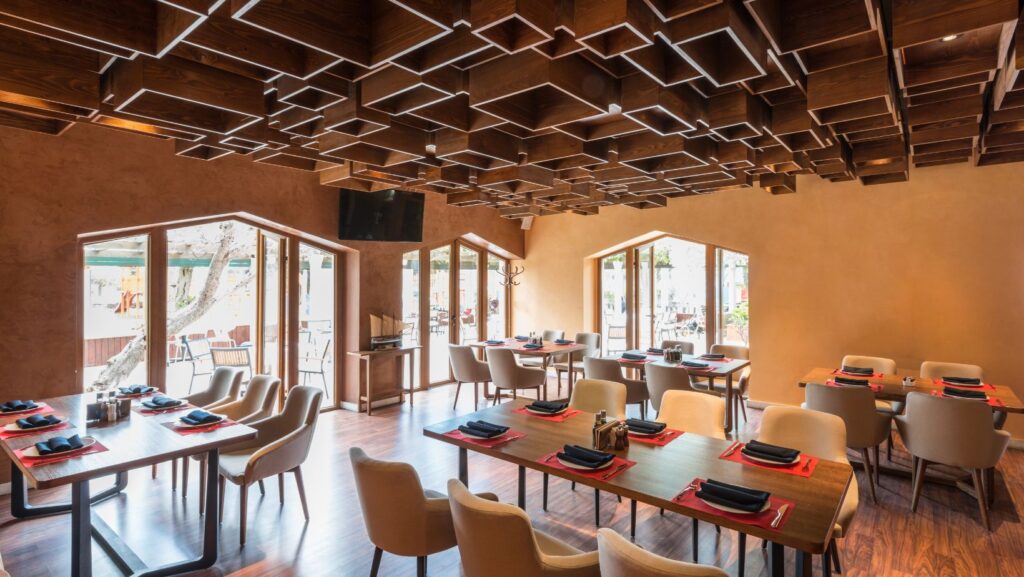
Creative thinking often needs the right environment to thrive. In restaurants, cafés, co-working lounges, and hotel lobbies, tables play a quiet but central role in shaping that energy. The right table design can invite collaboration, encourage focus, or create a private retreat where ideas take form.
Designers have begun treating commercial quality restaurant tables not only as functional surfaces but as tools for shaping mood and interaction. A well-placed table can define the rhythm of a space. How people move, gather, and create. The combination of material, shape, and proportion now determines whether a room feels open, grounded, or inspiring.
The Psychology of Design and Focus
Every creative space depends on balance. Too much noise, light, or clutter interrupts concentration, while too little stimulation drains energy. Tables act as anchors that set the tone of the environment. Smooth wooden surfaces invite calm, while textured finishes stimulate the senses. Rounded edges promote collaboration, while angular forms encourage structure and precision.
When designers select tables for creative settings, they consider more than appearance. Height, scale, and leg placement all influence comfort and engagement. For example, standing tables in brainstorming areas energize conversation, while compact café tables in quiet corners encourage reflection. The smallest detail can make the biggest difference in how people connect and think.
Materials That Tell a Story
The surfaces we work or dine on shape how we feel. Natural materials like oak, ash, and walnut bring warmth and grounding to creative interiors. Concrete, glass, and metal add clarity and a modern edge. Increasingly, designers combine both worlds, pairing solid wood tops with sleek steel bases or polished resin with recycled elements. To create depth and contrast.
Each material also communicates identity. A reclaimed wood table tells a story of sustainability and character. A matte marble top conveys precision and focus. In hospitality, these subtle cues help guests understand a brand’s values before a single word is spoken.
Creating Zones of Possibility

In today’s multi-purpose spaces, layout matters as much as style. Thoughtful placement of tables can turn an open room into a series of creative zones.
Designers achieve this by:
- Using small round tables in corners to foster intimate discussions.
- Placing communal tables in the center to spark collaboration.
- Pairing narrow bar-height tables with stools to energize conversation.
- Introducing movable tables that adapt to changing group sizes.
This approach blends flexibility with intention. It allows designers to craft experiences rather than static interiors, ensuring each corner of the space serves a clear purpose.
The Role of Color and Light
Color and light are essential to mood, and the table often acts as their focal point. When paired with generative AI, it can help you improve lighter tones such as birch or maple, create brightness and clarity, perfect for open studios or cafés. Darker shades, like walnut or blackened steel, build intimacy and concentration in focused areas.
Accent lighting enhances the visual appeal, highlighting grain and texture while shaping emotional atmosphere. A softly lit table corner can feel like an invitation to sit, write, or think. These design details make a space feel personal rather than programmed.
Function Meets Aesthetic Strategy
A creative space must support both comfort and productivity. Tables with built-in power access, adjustable heights, or modular components are now standard in progressive environments. Durability also matters. Solid wood tables resist wear while improving with age, making them ideal for daily use in shared spaces.
Practical considerations that enhance long-term value include:
- Scratch-resistant finishes for heavy traffic zones.
- Rounded corners for safer, softer interaction.
- Easy-to-clean surfaces in mixed-use cafés.
- Modular bases for reconfiguration during events.
Designers who balance these technical needs with strong aesthetics create spaces that function as beautifully as they look.
The Business of Creative Environments
A thoughtfully designed creative space does more than inspire; it performs. Restaurants and lounges that incorporate flexible table layouts often experience higher occupancy rates and longer stays. In workplaces, improved comfort and spatial flow contribute to better collaboration and employee satisfaction.
Tables, as simple as they seem, are measurable assets in this equation. They influence how people move, communicate, and connect. The financial benefit comes from improved engagement, increased productivity, and stronger customer loyalty.
A New Kind of Quiet
The most effective creative environments are not the loudest but the most intentional. A quiet corner with a well-designed table can do more to inspire focus than a high-energy open plan. The key is giving people choice: space to talk, space to think, and a setting that supports both.
In a world filled with distractions, design that promotes clarity is becoming a luxury. Tables that balance form and function offer that gift. They transform interiors into places where ideas breathe, conversations flow, and creativity feels effortless.
Where Bold Design Meets Calm Purpose
Modern designers understand that creativity needs contrast. Quiet moments within lively spaces, simplicity within complexity. Tables sit at the center of that balance. They ground movement, connect people, and make stillness possible.
For restaurants, offices, and hospitality venues alike, the next generation of table design will continue to merge bold aesthetics with quiet intention. These are not just surfaces to dine or work on; they are platforms for imagination. And in every creative corner, it is often the table that holds the story together.
